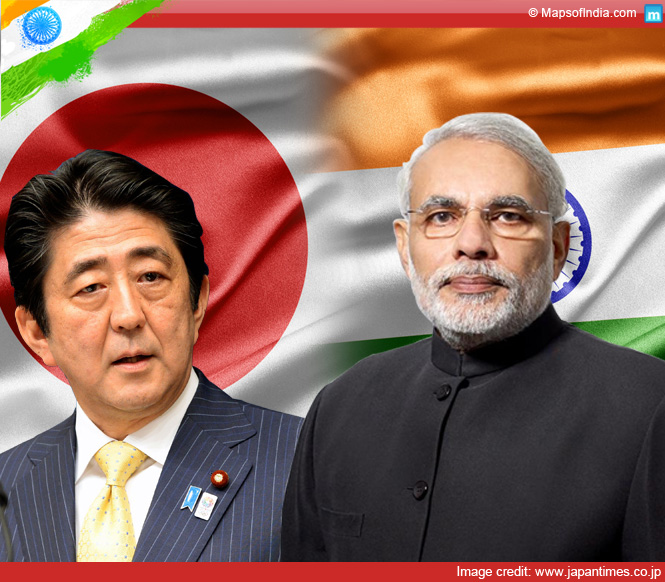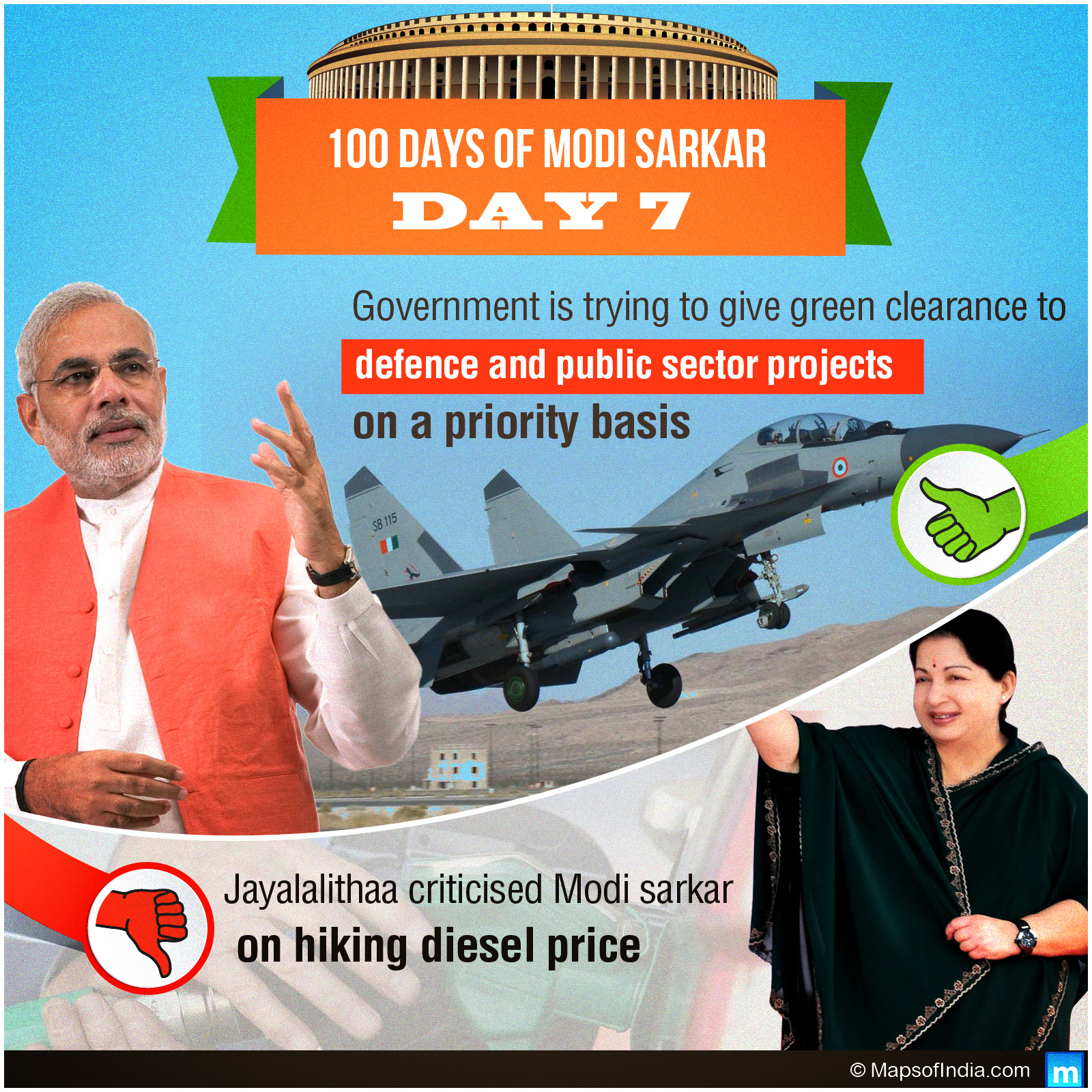No other country followed Modi’s progress to the Prime Minister’s post as much as the Japanese and with good reason. Japan has had a good working experience with Narendra Modi when he was the Chief Minister of Gujarat. They know his thinking and are comfortable with his style of functioning. The Japanese are betting big on Modi to further strengthen economic, diplomatic and now military ties.
This comes at a time when Japan has hardened its stand with China though they continue to remain invested there. Japan has a long running dispute with China over the Senkaku Islands, which the Chinese believe has been traditionally theirs (the Chinese refer to them as Diaoyu).
With both countries hardening their respective positions, Japan has been seen to take a more aggressive stand on the diplomatic front in winning allies, while China is resorting to the economic investment route to win support. India finds itself in a sweet spot where both the Japanese and Chinese are very keen to improve ties with India, along with wanting a bigger share of India’s growth story. Despite having a long and friendly relationship with India, Japan has lost ground to China on both diplomatic and strategic space and is now keen to change that to a more proactive engagement with India.
India’s Prime Minister understands this more than anyone else and is known to drive a hard bargain. The Japanese President Shinzo Abe, has an advantage over China as he already shares a good personal equation with Narendra Modi and follows him closely on Twitter. The optimism in Japan can be gauged by the fact that Japan was keen to be the first nation to host Narendra Modi on his taking over as India’s prime minister but Modi chose to drive his message of regional priority by making Bhutan his first nation of visit. However, Japan is on his priority list of nations that he wishes to engage with for fulfilling his dream to see India emerge as a developed economy. Japan has the money and the technology that India so desperately needs.
It was Suzuki’s investment in India in 1982 that really caught the attention of the Japanese industry and the success of their investment in India has opened up the way for more Japanese investment to flow in. According to Japan External Trade Organization (JETRO) in 2008, there were 500 Japanese companies operating in India, that number has risen to 3,000 by 2013 and if Narendra Modi caps a successful visit to Japan the number of Japanese establishments in India is likely to increase dramatically.
Between April 2008 and April 2014, India received $16.26 billion by way of foreign direct investment from Japan. The FDI inflow from Japan is likely to increase significantly if India can improve its infrastructure, taxation laws and policies relating to land acquisition and labour.
DMIC : A joint Indo-Japan Investment project
Japan has already committed interest and investment in developing the Delhi-Mumbai Industrial Corridor (DMIC) that will catalyze the emergence of India as a major industrial manufacturing and trading hub. The project is expected to more than double the employment potential in 7 years, increase exports by 4x in 8-9 years and more than triple the industrial out from the selected zones in around 9 years.
The plan is to develop a dedicated industrial corridor connecting Mumbai with Delhi that will run through Maharashtra, Gujarat, Madhya Pradesh, U.P, Haryana and the NCR of Delhi. The corridor length is 1483 kms and will comprise of six industrial zones located within a span of 150-200 kms of either side of the envisaged corridor. DMIC is planning an integrated connectivity that will include feeder rail and road between ports on the west coast and all the zones located in the hinterland.
Bangalore Chennai Dedicated Rail Freight Corridor
Japan has committed investments in the development of this dedicated rail freight corridor, which is one of six other planned corridors that will connect India’s largest petrochemical complex in Mangalore, the seaport in Mangalore with the air cargo complexin Chennai and Internal Container Depot at Whitefield in Bangalore. This project is part of the Mumbai–Bangalore Industrial corridor being planned with help from U.K.
All dedicated freight corridors being planned will be for heavy duty wagon loads of 32.5 tons/axle and capable of travelling up to a maximum speed of 100 kms. This is over three times the speed of the existing 25-30 kms/hour freight trains. The world’s first 3 stack container trains will run on these lines and will significantly increase the volume of freight while bringing down the cost.
Recent Japanese investments in India
Besides Toyota and Honda which have already made significant investments for building cars in India, other Japanese companies like the Hitachi Group is expanding its investments across industries and plans to continue growing its India business. Recently, it announced picking up 76% stake in Micro Clinic India, an IT Service company.
Hitachi Lift India remains bullish on business prospects for supplying specialized high speed lifts for high rises. Recently, it bagged an order for high speed lifts that travel at 360 metres a minute for a 73 level high rise in Mumbai. Hitachi hopes to bag significant business from the railways once the railway modernization program rolls out.
Other companies like Yokohama Rubber are setting up a new plant to manufacture rubber tyres in India for the automobile sector. Their tyres are presently being imported and sold in India.
Challenges to Japanese investment in India
Narendra Modi has a major task at hand and that will be to get Japan to agree on the civil nuclear deal. Japan is a major supplier to large US companies like GE and Westinghouse that supply turn-key nuclear plants. The Indo-US Nuclear deal is being held up because of Japanese resistance to be part of any agreement to supply nuclear technology to India and unless Japan comes on board, Indo-Japan nuclear ties and Indo-US nuclear ties will both be non-starters. An Indo-Japan deal will see significant investment from companies like Mitsubishi and Toshiba, who are major players in the nuclear industry. It is for Prime Minister Shinzo Abe to get his parliament’s approval to move ahead on this very crucial area.
All have not tasted success
This is going to be a major test for Modi on his maiden visit to Japan. Recently, two Japanese companies have withdrawn from the Indian market; one is Daiichi Sankyo and the other is NTT Docomo. While Daiichi had a bad experience due to lack of proper due diligence and misunderstanding with the local partner, NTT Docomo’s withdrawal was related to the uncertain and inconsistent telecom policy in India. Japanese industry tends to follow experience of other companies prior to committing their own investments and the withdrawal of these two companies in the recent past is certainly not a good sign.
The Japanese industry is not too happy about the government red tape, taxation and labour policies and is keen to see the Indian government make moves that will give them a positive headwinds that India means business. Certain states have taken positive steps towards making the Japanese feel welcome. Rajasthan is a good example.
State Governments show the way
The state government took the decision to convert Neemrana as an industrial hub with a special focus on Japanese investment. The state government has gone all out to set up dedicated housing for the Japanese expats, Japanese restaurants, departmental stores and Japan style hotels along with Japanese speaking Indians, all to make the Japanese feel welcome with a sense of home.
Similar friendly approach by the state government of Karnataka has seen a dramatic rise in Japanese investment in the Southern region.
Overall, Japan remains bullish on business prospects over the long term and is open to committing both technology and funds to spur India’s development. With Narendra Modi in the hot seat, the Japanese industry is eagerly looking forward to his maiden visit, hopefully in August this year. India has a lot at stake on this trip.
Related Information:
What does PM Modi’s Japan visit mean for India?
100 Days of Modi Government





